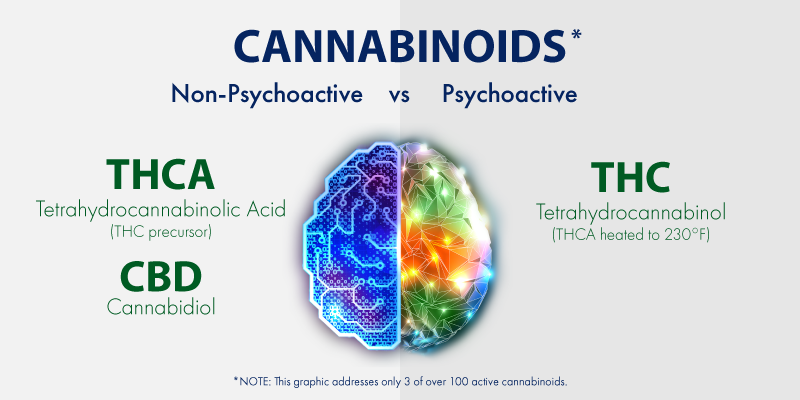Cannabis is ubiquitous. It’s in the news, debated politically, and discussed among friends, family, doctors, pharmacists, and wellness professionals. Research is mounting towards its validity as a medicinal tool. Dismissing it as “something for hippies” is no longer a justifiable option. Becoming more familiar with its healing properties is the first step in accepting its presence in our communities.
A History of Ups and Downs
Cannabis has been used for centuries as a healing herb in rituals and medicine. It was found in the tomb of the Chinese Emperor Wu of the Han dynasty 100 years B.C. In India, it was considered sacred. The Atharva Veda mentions cannabis as one of five sacred plants, referring to it as a source of happiness, donator of joy, and bringer of freedom. Hence, cannabis use became part of numerous religious rituals globally.
The effective introduction of cannabis in Western medicine occurred in the mid-19th century through the works of William B. O’Shaughnessy, an Irish physician, and by Jacques-Joseph Moreau, a French psychiatrist. Together their research contributed to the use of cannabis in treating medical conditions such as convulsions, muscle spasms, and mental illness. Western medicine benefitted from this research and laboratories marketed cannabis extracts or tinctures across Europe and the United States throughout the last century.
As interest in cannabis increased in the early 1900s, more scientific studies showed how conditions such as epilepsy, spasms, nausea, glaucoma, and analgesia responded favorably to THC, the psychoactive constituent in cannabis. Cannabidiol or CBD gained notoriety for its therapeutic effects on insomnia, anxiety, inflammation, epilepsy, and chronic pain.
Although studies found favorable results, the political climate turned strongly against marijuana use in the 1960s. In the midst of this climate, the Controlled Substances Act of 1970 officially prohibited the use of cannabis for any purpose. It became a schedule 1 classification which deemed it to have a high potential for abuse with no accepted medical use. Scientific research was suddenly unfunded and forbidden. In 1975, Maine decriminalized cannabis thus opening the door for medical use and further study. Mainers then voted to legalize adult use in 2016. On December 10, 2018, hemp (a cannabis plant with trace amounts of THC) was legalized on a federal level. The ruling establishes 0.3 percent or less of THC as the legal threshold.
A Safe Alternative for Chronic Conditions
It is no secret Maine has an aging population and with age comes chronic health conditions that require medical attention. No doubt there are people in everyone’s life who are suffering from some sort of chronic condition, be it physical or psychological. Medical cannabis is rapidly becoming a popular alternative therapy for treating conditions that have failed conventional wisdom.
The Human Endocannabinoid System
The endocannabinoid system (ECS) is a system of physiology that is active in everyone throughout all of life. It is a signaling system in the body that influences metabolic pathways to promote homeostasis or balance. It protects us from harmful toxicities and environmental assaults on our immune system by promoting health and comfort in our tissues. It enables us to eat, sleep, relax, and to forget. It is active all the time, promoting physiologic health and well-being.
Our bodies continually produce cannabinoids through metabolic pathways to promote optimal functioning systems. When there is an imbalance due to stress or illness, the ECS regulates those disrupted systems and restores them to health. If the imbalance
Cannabinoids: What are they?
Cannabinoids are the overarching group of related compounds that are contained in the cannabis plant. There are over 130 active constituents in cannabis with THC and CBD being the most well-known and influential. We’ll explain these constituents, starting with the precursor to THC; Tetrahydrocannabinolic Acid (THCA).
Tetrahydrocannabinolic Acid (THCA)
THCA is the raw or acidic form that produces no psychoactive response but certainly has healing properties. One would have to consume large quantities of THCA for a therapeutic effect. THCA is the precursor to THC, the psychoactive form of cannabis.
Tetrahydrocannabinol (THC)
THCA becomes THC only after it has been heated to about 226 degrees. Consuming low doses of THC produces mood-altering effects such as relaxation, euphoria, and creativity. It stimulates a part of the brain to release dopamine which drives sources of pleasure, like food and sex and causes the high. This is what attracts users to its beneficial effects.
Cannabidiol (CBD)
CBD is another active constituent that
Terpenes and Flavonoids
Terpenes and flavonoids are other chemical constituents found in cannabis and many herbs, fruits, and plants. They play a key role in differentiating the effects of various cannabis strains. Their fragrant oils are secreted in the cannabis flower’s sticky resin glands which color cannabis varieties with distinctive flavors like citrus, berry, mint, and pine.
Some terpenes promote relaxation and stress-relief, while others promote focus and acuity. Terpenes produce THC and CBD and other cannabinoids. Research is underway to better understand how these constituents function in the ECS and how health imbalances may be improved using specific terpenes.
Psychoactive vs Non-psychoactive
Much of what fuels the stigma surrounding cannabis is the psychoactive/intoxicating properties of the active constituent, THC. Both psychoactive and non-psychoactive forms of cannabis have specific uses and benefits.
Psychoactive Uses
In some cases, the psychoactive properties are part of the desired therapeutic outcomes. Some conditions that may be helped include cases of
- insomnia,
- nausea,
- movement disorders,
- depression, and
- anxiety.
So much of the success in treatment depends upon dosing. While large amounts for THC may cause anxiety, low doses actually treat it very effectively. At Integr8, we call this a bi-directional effect (a term taught to me by Dr. Dustin Sulak).
By combining CBD with THC the psychoactivity decreases while enhancing THC’s benefits. Pediatric seizures are treated very effectively with both of these constituents with customized dosing despite what the media has touted as a CBD only revolution.
Non-Psychoactive Uses
In other cases, there is no need for a psychoactive element to therapy and the patient will benefit from CBD only. Many conditions fall into that category,
- cognitive function and focus,
- pain and inflammation, and
- seizures.

Moving Forward
Cannabis targeted therapies are developing rapidly as barriers to research are opened and funding flows in. Giving respect for the plant and protecting its fragile integrity is important moving forward as demands for treatment of physical and non-physical conditions increases. It is not to be feared, it is not a dangerous substance and it deserves respect and reverence in order to maintain its integrity.
“It gave me my life back”
Having worked with Dr. Dustin Sulak and my colleagues at Integr8 Health for many years, I have seen how medical cannabis has freed patients from their health struggles. Frequently I will hear how low dose cannabis medicine has either altered one’s relationship with their pain or arrested muscle spasms that prevented a restful sleep or how they were able to distance themselves from their trauma and restore their sense of self. “It gave me my life back” is not an uncommon quote. It promotes self-efficacy and thereby helps manage challenges in reclaiming their lives.
I invite you to join my discussion and learn more about medical cannabis and CBD at Coastal Pharmacy and Wellness January 10, 2019, from 6-7:30 PM. Visit the events page for more information and to register.


